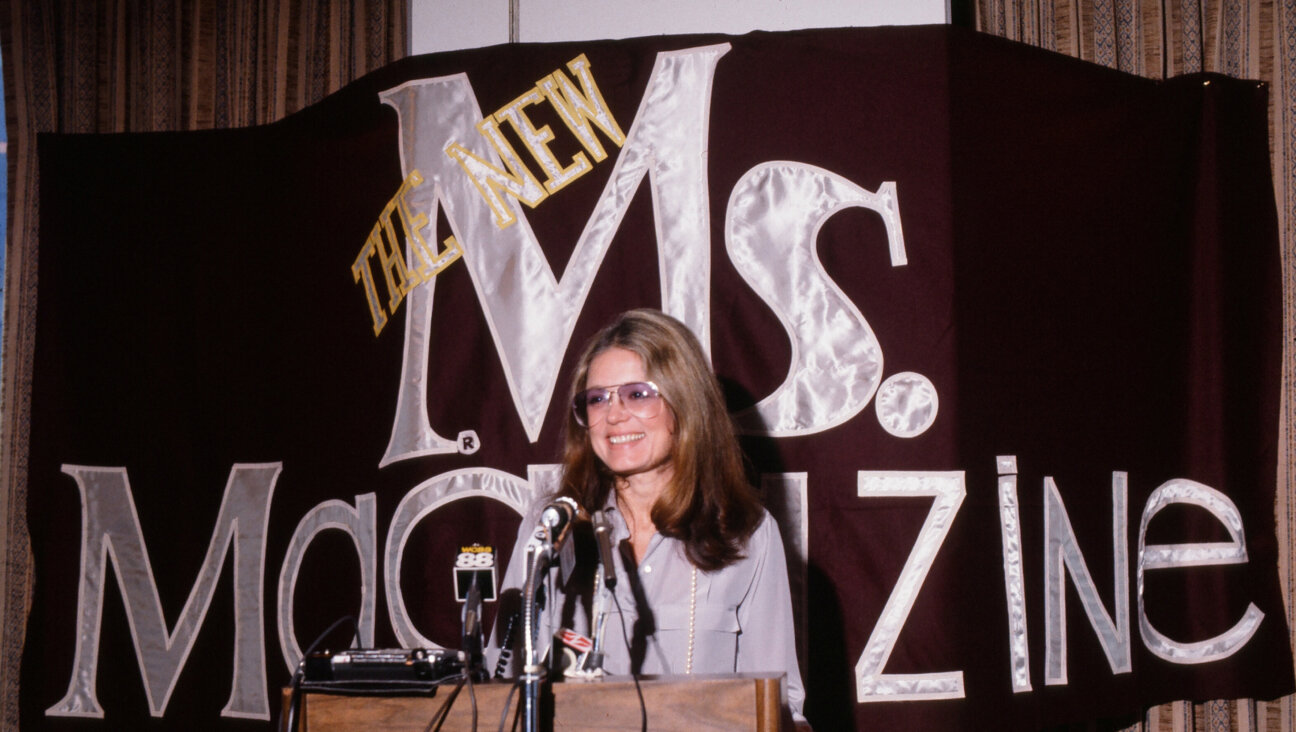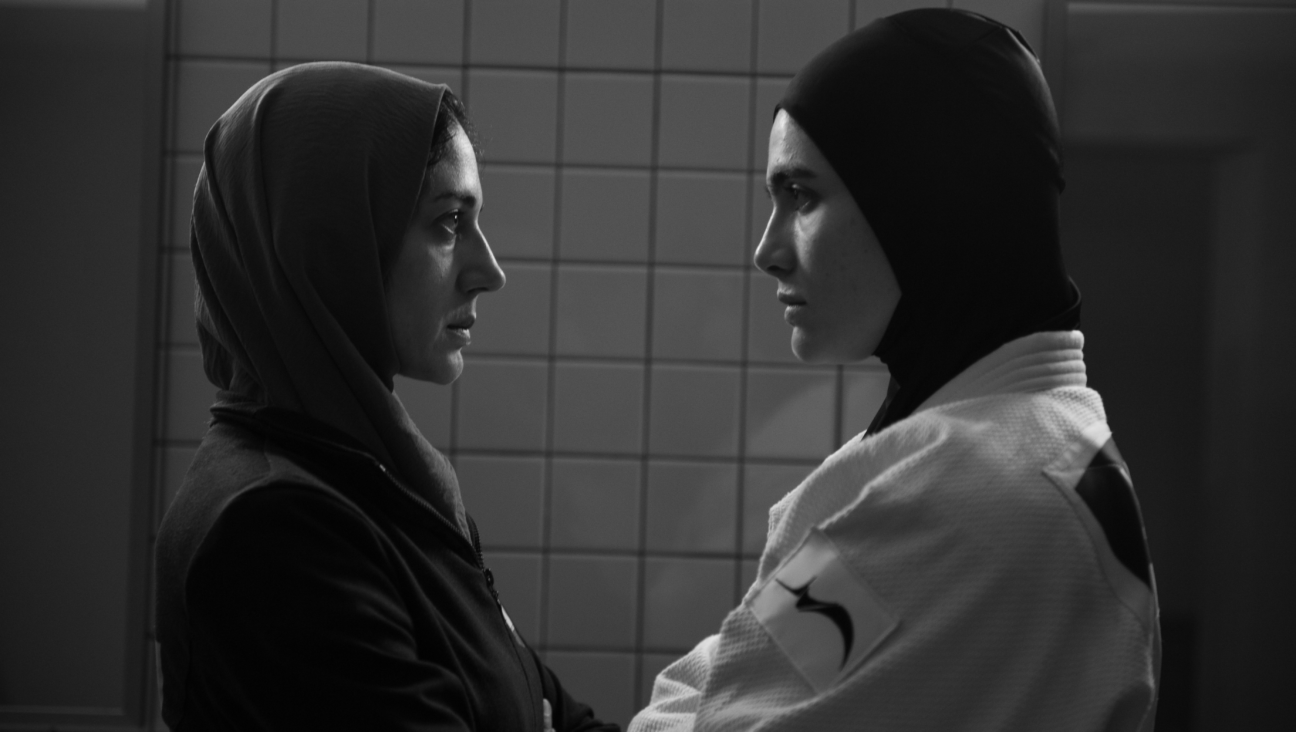The Secret Jewish History Of Robin Hood

Robin Hood Image by Getty Images
Robin Hood is well known as a defender of oppressed populations. But one aspect of his story that has mostly been lost to time, however, is his role as protector of Jews, who figured prominently in ballads and dramatic texts that began appearing in 15th- and 16th-century England. Aside from his fundamental mission of tikkun olam — repairing the world via a forced redistribution of wealth, aka stealing from the rich and giving to the poor — Robin Hood was originally portrayed as a champion of all the oppressed, whether they be peasants, Muslims, disinherited kings, scorned Crusaders, anti-clerics or Jews.
There is no single scriptural source for the tale of Robin Hood. Rather, this figure of English folklore, typically portrayed as a noble outlaw, is the stuff of legends that have accumulated for over half a millennium, legends that retell and elaborate on the basic story in order to emphasize and add to its various aspects like so much midrash, in the form of ballads, poems, games, plays, books and, for the past century, on the silver screen: This month, the latest version of Robin Hood can be found in an eponymously titled movie directed by Otto Bathurst (“Peaky Blinders,” “Black Mirror”) and starring Welsh actor Taron Egerton as the title character, Jamie Foxx as Little John, Ben Mendelsohn as the Sheriff of Nottingham and Eve Hewson (daughter of U2’s Bono) as Maid Marian.
While tales differ as to Robin Hood’s exact origins, it is generally accepted that he hailed from Yorkshire in the north of England in the 13th century — an area that also boasted a significant Jewish settlement — before moving to Nottinghamshire, home to Sherwood Forest and a particularly nasty sheriff who was no friend to the children of Israel. By the 16th century, the fictional Robin Hood was typically portrayed as a contemporary and supporter of the late-12th-century king Richard the Lionheart. In this schema, Robin was driven to live outside the law due to the misrule of Richard’s brother John, while his friend Richard was abroad doing the things crusaders did on the Third Crusade. Oddly enough, in these versions of the story, Richard’s adventures were supported financially by a friend of Robin’s: a Jewish moneylender named Isaac. By the time the legend of Robin Hood was turned into a formal work of art in Sir Walter Scott’s 1819 novel “Ivanhoe,” Isaac and his daughter Rebecca had become main characters in the story, portrayed by Scott with great sensitivity in contrast to the prevailing view of Jews that is presented in fictional and dramatic accounts of the time. Some have suggested that Scott based his Rebecca on the real-life Rebecca Gratz, the 19th-century Philadelphia-based educator and philanthropist whom he came to know of through fellow author Washington Irving.
Isaac and Rebecca weren’t the first Jews to play roles in a Robin Hood story. One of the popular early tales recounted in ballads was that of the wicked Sheriff of Nottingham, who bore a grudge against Jews, owing to a debt he carried with a Jewish moneylender. Keep in mind that, at the time, the profession of moneylender was restricted to Jews, it being thought of as too odious a job for good Christians and one of the only professions sanctioned for Jews. Several times, the sheriff would stir up hatred of Jews in and around Nottingham, at which point the Jews would flee into Sherwood Forest. There they came under the protection of Robin Hood. In one story, the children are secretly taken to France by one of Robin Hood’s merry men, Friar Tuck, in a kind of proto-Kindertransport.
Another search for a historical connection between Robin Hood and the Jews of Nottingham centers on a pub there called the Snottingas Alehouse, which stood at the corner of Jews’ Lane. The tavern was known to be favored by Jews as well as non-Jews, and in more than three dozen ballads, Robin Hood is portrayed downing brewskis with his fellow outlaws as well as downing many a l’chaim with his slivovitz-loving landsmen.
Over the centuries, different approaches to the story have emphasized the role of other characters, as in “Ivanhoe.” At some point, the story took on a more romantic cast, and the woman we now know as Marian became a full-fledged love interest and a veritable co-star, such that, by the 20th century, none other than Audrey Hepburn played Marian to Sean Connery’s Robin in the 1976 British-American film “Robin and Marian” — directed, incidentally, by Richard Lester (born Richard Lester Liebman) and written by the American Jewish screenwriter James Goldman. While the name Marian is a variant of Mary, in some early ballads she is referred to as Mariam, which is itself a variant of the Hebrew name Miriam — which is, of course, the original name of the mother of Jesus Christ, more commonly known today as Mary. Some also surmise that Robin, rather than a diminutive of Robert, may well have been an Anglicization of the Hebrew name Reuven. Then again, some might let their imaginations stray just a bridge too far; “Robin Hood” may simply be a straightforward description of a proto-superhero who rode into town wearing a hood as a disguise in order to remain anonymous while robbing the rich.
The silver screen simply can’t seem to get enough of Robin Hood. His story has been remade numerous times as a film, beginning with the 1908 silent movie “Robin Hood and His Merry Men,” followed by dozens of movies each decade, mostly notably Errol Flynn’s 1938 portrayal; Elizabeth Taylor’s portrayal of Rebecca in the 1952 “Ivanhoe,” and Costner’s 1991 “Robin Hood: Prince of Thieves,” up through to this month’s brand-new “Robin Hood.” In modern times, Robin Hood has inspired comic books, animated films, TV shows, video games, jazz and classical themes, and even pop and rock songs, including “Poor Boy (The Greenwood)” by the Electric Light Orchestra, “Robin and Marian” by Nickel Creek and “Robin Hood” by the German heavy metal band Edguy. The Muppets, the Smurfs, Ren & Stimpy and Super Mario Bros. have all tackled the legend.
Other than in the “Ivanhoe” film — and, of course, in Mel Brooks’s short-lived ’70s Robin Hood sitcom, “When Things Were Rotten” and in Brooks’s film “Robin Hood: Men in Tights,” in which Friar Tuck is portrayed as a Yiddish-speaking Hasidic rebbe — almost all modern portrayals omit the secret Jewish history of Robin Hood, with one notable exception: In “Sir Greenbaum’s Madrigal,” the early-1960s folk music parodist Allan Sherman put the Jew back in the story:
In Sherwood Forest
There dwelt a knight
Who was known
As the righteous Sir Greenbaum
All day with the slaying and slewing
And smiting and smoting like Robin Hood
Oh, wouldst I could kick the habit
And give up smoting for good.
Said he,“Forsooth
’Tis a sorry plight
That engendered my attitude bluish”
Said he, “I don’t wanna be a knight
That’s no job for a boy who is Jewish.”
Seth Rogovoy is a contributing editor at the Forward.























